Business is moving towards a more customer-first approach to its strategies. In order to increase...
The Ultimate Guide to Getting Started with WordPress in 2022
So you’re looking to set up a new website? It’s likely if you are reading this article that you already believe that WordPress may be the best solution, and well, you would be right!
In this guide, we’ll cover everything that you will need for getting started with WordPress and help you to unleash the full power of the platform to build the website of your dreams.
Is WordPress still relevant in 2022?
Yes, WordPress is still relevant in 2021. WordPress powers 39.6% of the internet or 64 million websites globally, and today is the world’s most popular Content Management System (CMS) for building websites
Technology is constantly being updated so there’s no way to know what changes may come in future versions, but this has never affected the need for WordPress. As long as people are writing blogs or building websites, they’ll continue to use WordPress and its customizable features, website templates, and more.
There are many reasons why WordPress continues to be so popular, and we’ve gathered some of those reasons below.
It’s free and open source
Arguably this is the number one reason why WordPress is so popular. The fact that it’s easy to fully customize. When you combine this with the fact that WordPress is free, then it becomes clear why WordPress is such a fantastic proposition.
There’s a plugin for that
Plugins have been vital to WordPress’s continued rise in popularity and adoption. There are countless plugins available to install, for almost anything you could think of. Furthermore, most WordPress plugins seamlessly run autonomously, and overall make the job of running your website that much easier.
Themes
Themes like plugins are easy to install. The key difference is that a WordPress theme would typically be used for building, styling, and editing the front end of your website, normally with ease.
Themes also share another similarity with plugins, and that is the fact that there are thousands of them to choose from too. You can browse the WordPress Theme Directory, however, do consider that there are premium themes too, although these are paid for.
Plus, some themes, such as Divi or Elementor, will also come with page builders that make building your website so much easier – especially if you are not all that familiar with code.
Global appeal and ease of use
The fact that WordPress is available in over 62 languages gives it that global appeal and reach. Moreover, it really is easy to install and use. WordPress is also supported by major web hosting companies worldwide.
Is WordPress easy for beginners?
Yes, WordPress is fairly easy for beginners to use and navigate. Many people, when they first start with their blog or website, may feel bogged down in the technicalities and features of a highly complex and customizable platform, but getting started with WordPress really isn’t that hard. Plus, it’s completely free!
To create an online presence, all you need is a domain name (which is the web address) and then install WordPress on top of that. It’s not as complex as it sounds and you don’t need to be a computer genius to master it.
WordPress.com vs. WordPress.org
Before we begin it’s important that you first fully understand the difference between WordPress.com and WordPress.org.
The key difference between the two is who is hosting your website and essentially all of its content. If you opt to use WordPress.org, then you will be hosting your own website, and will, therefore, need to find a suitable web host if you have not already. Think of WordPress.org as more of a DIY solution, which will have its own benefits, such as more flexibility.
WordPress.com, in contrast, is certainly less technical in terms of setup and more of an all-in-one package. For instance, you will not require third-party web hosting as WordPress will host the website for you.
| For the purpose of this guide, we will be looking at WordPress.org only. |
WordPress setup
The following guide will help you to understand and navigate the core components of WordPress with ease. Let’s begin.
Choose a web host
Before you even download and install WordPress you should first find a suitable web host, and they are not hard to find. Just simply Google ‘WordPress Hosting’ and you will be spoilt for choice.
It’s important to note that many WordPress web hosting providers will install WordPress for you at the click of a button such as the offering from LCN.com or TSOHOST to name just two.
Your hosting will usually depend on the type of website you own. If you have a blog, for example, your hosting requirements may be different from if you have a busy online business. So, be sure to shop around, and consider your options both now, and in the future, before you commit.
If you wish to, you can also install WordPress manually yourself. However, if terms such as FTP unsettle you, then I would urge you not to, as this would be the more technical route. If you would like to install manually, then please refer to the WordPress manual setup guide.
The dashboard
Now the fun begins, as you’ll now be within WordPress. Whenever you log in you should be greeted by the dashboard as shown below.The dashboard will present you with an overview of your website. The information displayed here will typically include news about available updates, however, you will also be able to see any draft posts and any recent comments that your visitors may have left.
Appearance
Now the magic can happen. Under ‘Appearance’ you will be able to browse and install a theme that you would like to use for building and styling your very own website.
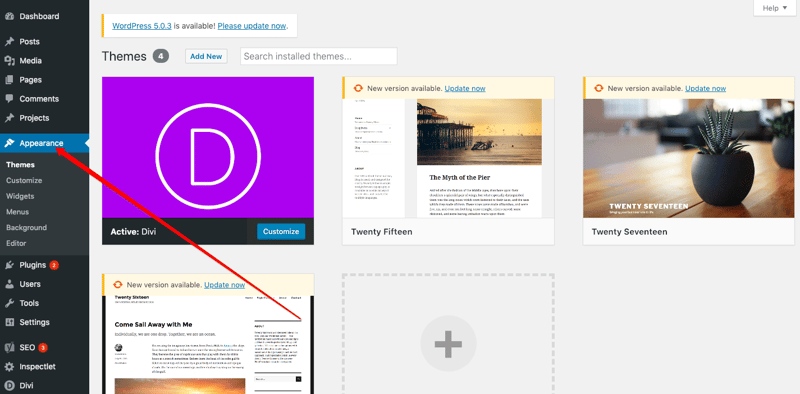
Remember, as highlighted earlier, there are thousands of themes out there to choose from, so take your time to compare and look at what is best for you.
Free themes
Free themes are what you’ll find in the WordPress directory.
If you click on ‘Appearance > Themes’, then you’ll see a big list of free themes that you can choose from. Once you’ve selected a theme you like, just click ‘Upload Theme’.
These themes are great for beginner websites and may be suitable for you if you’re just getting started with WordPress.
Premium themes
Premium themes, on the other hand, are a little more high standard. You will need to pay for them. But they can offer you much more, both in the way of choice and features such as advanced page builders or custom fonts.
Premium WordPress themes can be found online in marketplaces such as ThemeForest and Creative Market.
Of course, it’s still important to do your research before buying a theme and not every premium theme will be suitable for what you need. But premium themes are great for websites that want to communicate their professionalism and expertise through design.
Plugins
Like themes, there are countless plugins available. Below are just some examples of what plugins can do;
- Protect your website from hackers and spam
- Help you to learn basic SEO
- Help you to create a range of contact forms
- Convert abandoning website visitors into email subscribers
- Improve your website speed and performance
These are just some examples, of course, the list is seemingly endless.
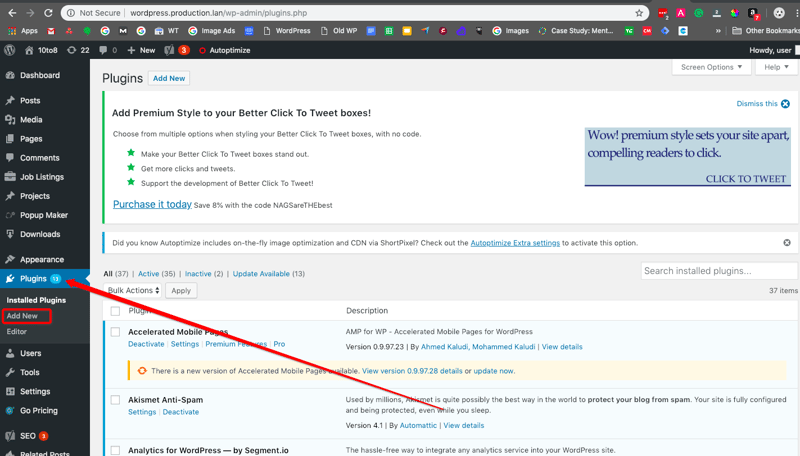
To add a new plugin simply select ‘Plugins’ and then ‘Add New’ from the menu as illustrated above. Moving forward you can of course, also manage existing plugins in the form of updating, deactivating, and removing via the ‘Plugins’ page.
However, it’s worth noting that, although installing every plugin under the sun may seem tempting when you’re getting started with WordPress, too many plugins could slow down your website. Due to some of Google’s latest updates, this could end up affecting your SEO and your rankings. So, as a general rule, only install the plugins that you actually need for your website to properly function.
Here are a few of the top plugins on the market today:
Yoast SEO
Yoast is a free SEO plugin for WordPress. It helps you to write better content through several useful features, such as:
- Adding meta tags and schema markup to your sitemaps and blog posts
- Optimizing your permalinks
- Improving the readability of your articles
- Detecting and improving your keyword density in articles and pages
Overall, it can go a long way to helping your site rank higher in a search engine and increase your click-through rate. There are several features of Yoast that are available for free, but you can also purchase a paid version to unlock even more great features.
Askimet
For all websites, spam can be a problem. It can affect your bounce rate and is something that you want to avoid. Askimet is a free spam protection plugin for WordPress that can help prevent this.
It’s considered one of the best at what it does and it works by checking each comment that is submitted for spam. Once it has been confirmed as spam, the commenter will never be able to post a comment again.
Monster Insights
Often considered the best Google Analytics plugin for WordPress, Monster Insights is a great tool for WordPress sites that want to track visitors and improve their website.
This plugin allows you to collect analytical data and track your website visitors in real-time. You can view your bounce rate, page views, sessions, and more every time you log in to your WordPress dashboard.
WooCommerce
If you own an eCommerce business, you’ll likely need WooCommerce. This is one of the top eCommerce plugins for WordPress and it allows you to create a beautiful online store. You can easily complete payments and display your products cleanly and efficiently through WooCommerce.
In fact, WooCommerce has become more of a system not than purely a plugin as you can add themes, hosting plans, and other plugins dedicated to working seamlessly with WooCommerce.
Pages
Once you’ve installed your theme then you’ll likely want to get started on your homepage. Before you do, however, there is just one last step. Navigate to ‘Settings’ followed by ‘Reading’ to set which page or post you would like to be your homepage.

Then, it’s time to design the pages that you have on your website. Here are some of the most crucial pages you’ll need to include:
Homepage
Possibly the most important page on your website, your homepage will often be the first page that people see when they visit. It’s usually designed to catch their attention and convince them why it’s worth staying on your site.
About Us
This page is crucial in differentiating yourself from other businesses both in terms of what you do but also who you are.
The ‘About’ page of a website is actually one of the most visited pages as the audience is usually curious to see what a business is about before purchasing from them.
So, ensure that this page showcases who you are and what sets your business apart, as it tells the story of your company.
Contact Us
This is another key section on your site. Make sure it’s easy for visitors to find so they know how they can get in touch with you if they have any questions or concerns about your business or offerings.
The contact us link should be clearly displayed somewhere on every page of the blog so when readers need help they don’t struggle to find it.
Blog
A blog is a great way to keep your audience engaged and in touch with the latest news and trends in your industry. A lot of websites will have a blog to help promote their knowledge and help their audience – in fact, some websites are just a blog and build their entire site around articles.
Your blog page is also another opportunity to promote your business and create a following. Posting frequent blog articles can help increase site traffic and search engine rankings as well.
Shop
If you own an eCommerce business, you’ll likely need a shop page for your site. This is where you’ll list your services, your prices, and your payment methods, plus take orders, complete payments, and engage with customers through this page.
You’ll also want to make sure this page is easy for visitors to find so they can get in touch with you for purchases or questions about your offerings.
Permalinks
Permalinks are another important factor that is sometimes overlooked. By default, your WordPress post and page URLs will be rather ugly, and certainly not SEO friendly.
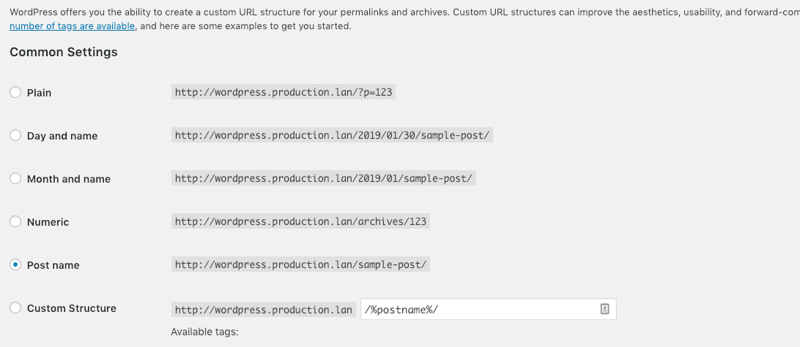
We would highly recommend navigating to ‘Settings’ and then ‘Permalinks’, and choosing a post name, which will give you a clean URL structure.
But you can also take care of this with a plugin like Yoast SEO.
Media
The ‘Media’ section within your WordPress dashboard is, as the name suggests, where all of your media will be stored, which includes images, videos, PDFs, and more. You can upload supported files from your computer here by simply selecting ‘Add New’.
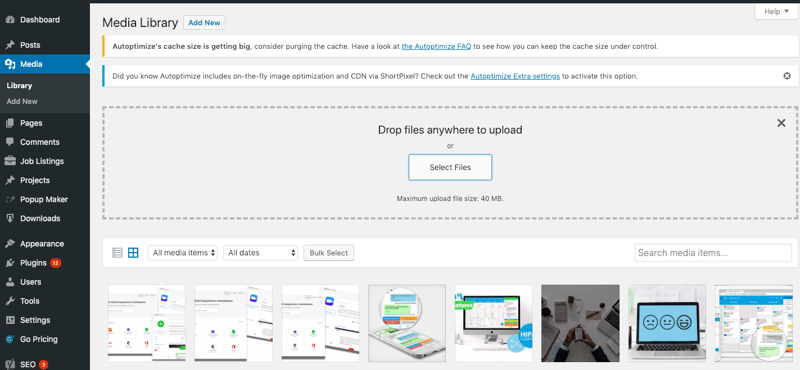
The Media section will also allow for you to add files by including an existing link if your file already exists and is hosted elsewhere.
A bonus tip: the WordPress media editor can be accessed by selecting an asset in the library and then ‘Edit Image’. The editor has some features which not all folks are aware of, such as the ability to crop, resize, and scale images all within WordPress.
Overall…
In summary, getting started with WordPress is quite simple. It is a user-friendly and cost-effective solution to build your new website and gives an endless number of possibilities at your fingertips. You can create a site that perfectly showcases your products and services to potential customers through custom content.
With enhanced functionality in the way of plugins for almost everything and anything, coupled with themes that will allow you to create a new website using visual builders, it’s clear to see why WordPress powers 14.7% of the top 100 websites in the world.
It’s not as hard or complex as some people think so don’t be intimidated by the features of this amazing platform. With this guide, you’ll be up and running in no time!
Have you used our tips or built your own website using WordPress? Feel free to let us know and maybe show off your own website in the comments.

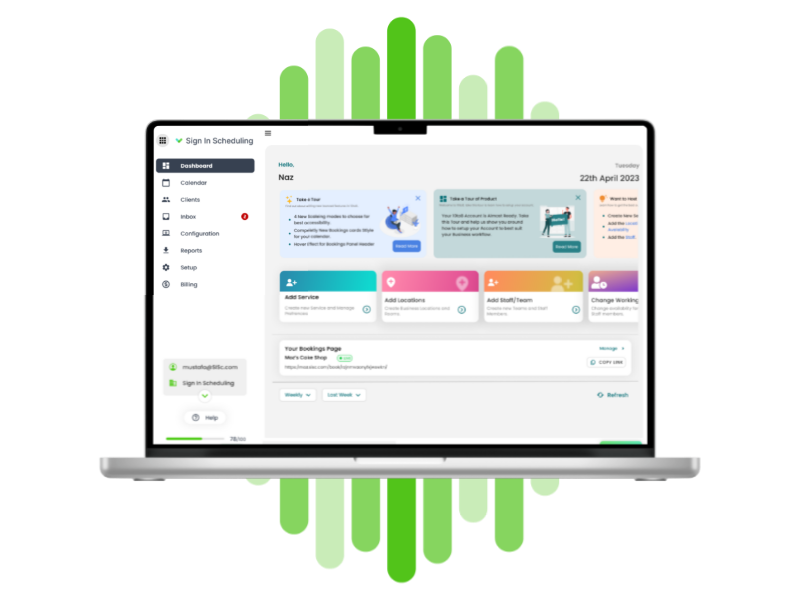




Blog comments